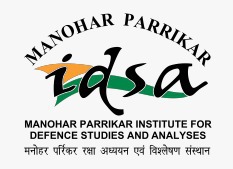1971, the War as I Saw It
Introduction
- Shamsher M. Chowdhury |
- October–December 2021 |
- Journal of Defence Studies
Home » Journal of Defence Studies
Introduction
The Partition of India in August 1947 was a colossal man-made catastrophe resulting in the formation of Pakistan, with its east and west wings.Jinnah’s two-nation theory ignored the diverse culture and geographical settings. East Pakistan got its first political shock when Hussain Shaheed Suhrawardy—a popular mass leader—did not become the chief minister of East Pakistan. Further, in the initial period of state formation, there was forceful imposition of Perso-Arabic culture and Urdu language by the leadership of Pakistan, consisting majorly of Punjabis and Pathans from West Pakistan.
The ‘Lightning Campaign’ to liberate Bangladesh during the 1971 IndoPak War was one of the finest moments in Indian history. The ‘Battle of Garibpur’ fought on 21–22 November 1971, before the Indo-Pak War was officially declared on 3 December 1971, was a key battle in East Pakistan where a single infantry battalion, 14 Punjab (Nabha Akal) supported by a squadron of armour and intimate artillery support, successfully fought a Pakistani attack by infantry and armour.
This article seeks to re-analyse the pattern of Pakistani response to the demands from East Bengal as a federating unit with distinct linguistic
and regional identity, which led to eventual vivisection of Pakistan, and examine whether in the post-1971 years Pakistan learnt any lesson from
its Bangladesh experience and used it to deal with similar assertions at ethnic and regional levels.
The objective of this article is to analyse the role of language and culture in the creation of Bangladesh. The ethno-linguistic identity of the people
The military has been an integral part of Pakistan’s survival since the formation of that nation state. The idea of the country was based on a united Islamic religion, but series of events dampened the nation’s integrity. In the absence of robust political institutions to promote democracy, the bureaucratic and military apparatus made inroads into polity and expanded their role as dominant powerful elite in the initial years after independence.
This article looks at the real issues that were responsible for destabilising the centre of gravity of Pakistan Army in the eastern sector. Lieutenant
The only unfettered use of air power in India’s wars was in 1971, and it produced disproportionate and decisive outcomes. IAF’s air strategy, the extent of its role in contributing to the failure of Pakistan’s strategy in the west, and the vast range of operations carried out towards the surface war on both fronts simultaneously, are relatively unknown.
Introduction
The India–Pakistan War of 1971 happened at the time when the US was developing a new balance of power relationship in Asia with US-ChinaPakistan at its core. This new balance of power initiative was based on the United States’ ‘Opening to China’ through secret diplomacy with the help of Pakistan, and this resulted in a convergence of interests of US, China and Pakistan.



